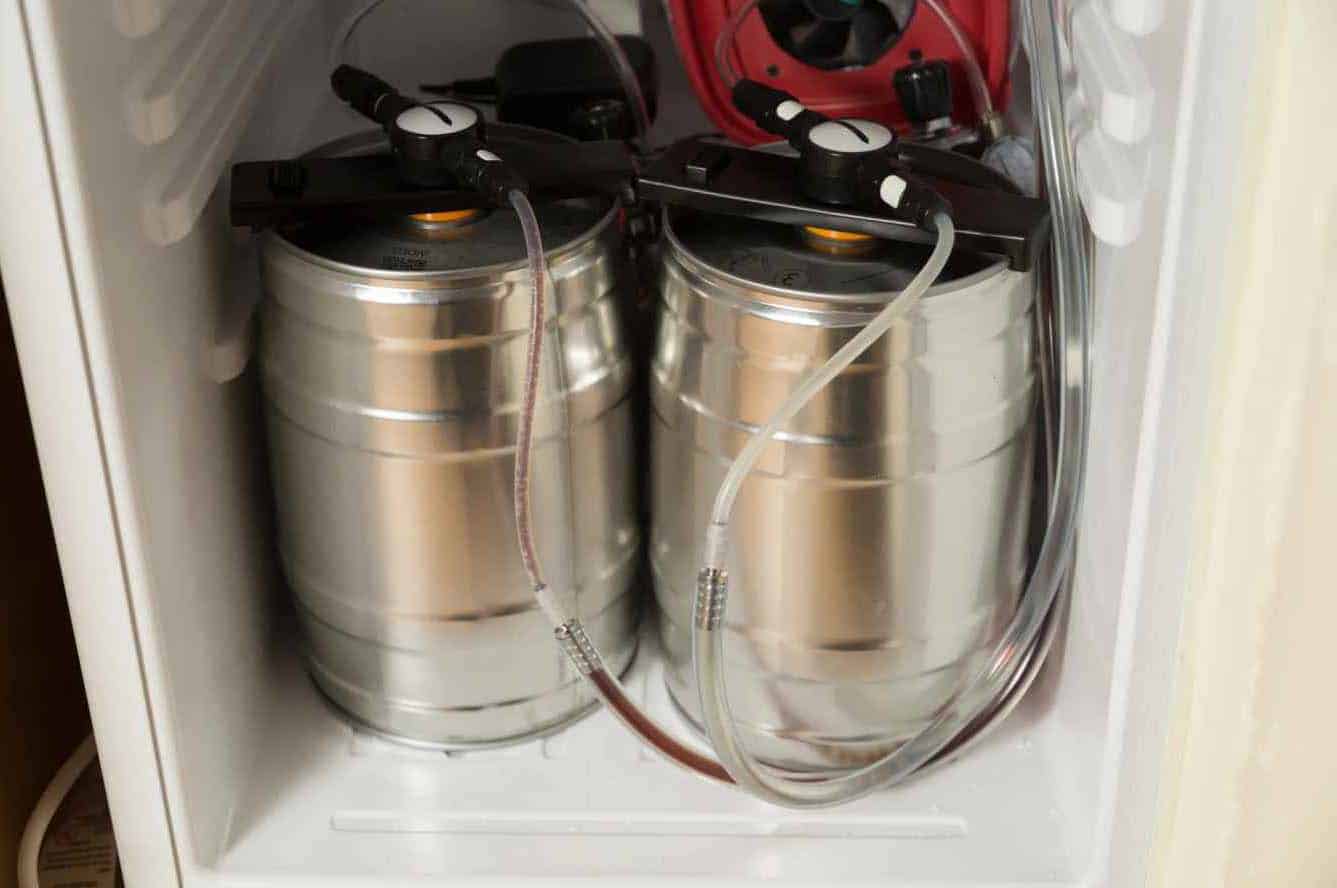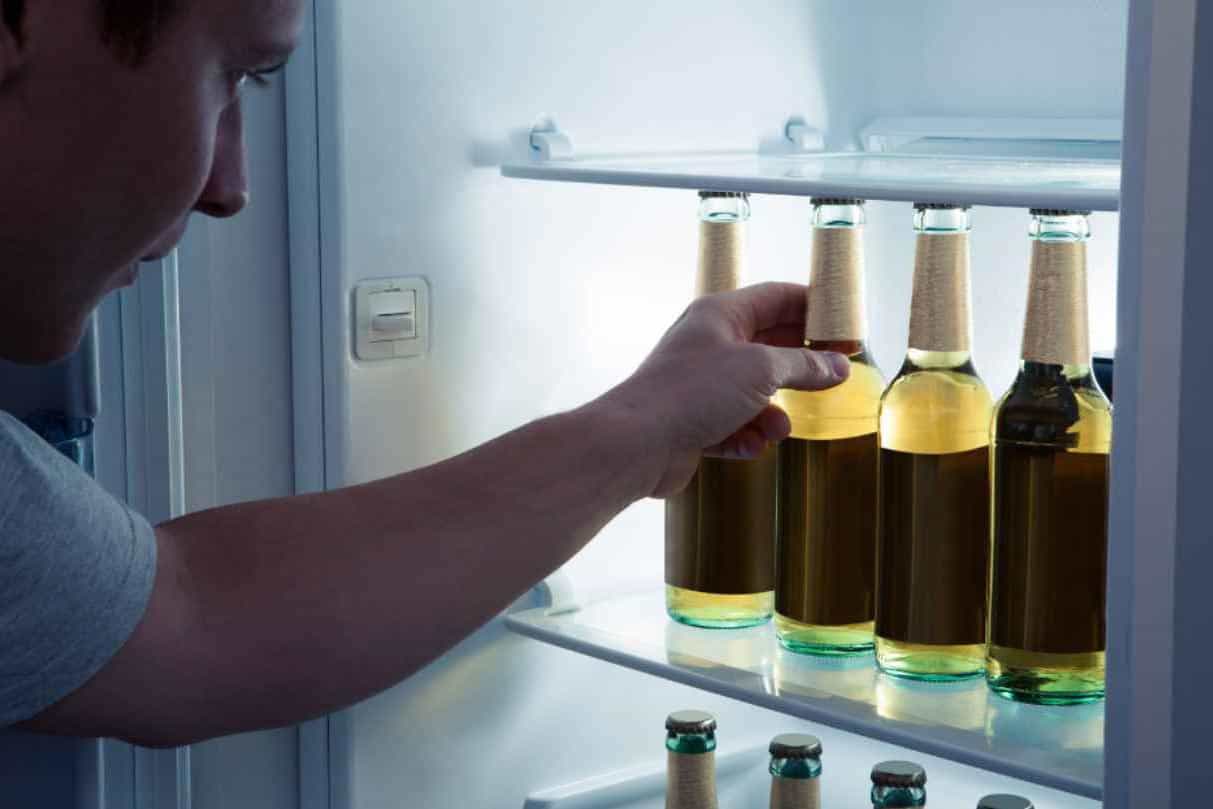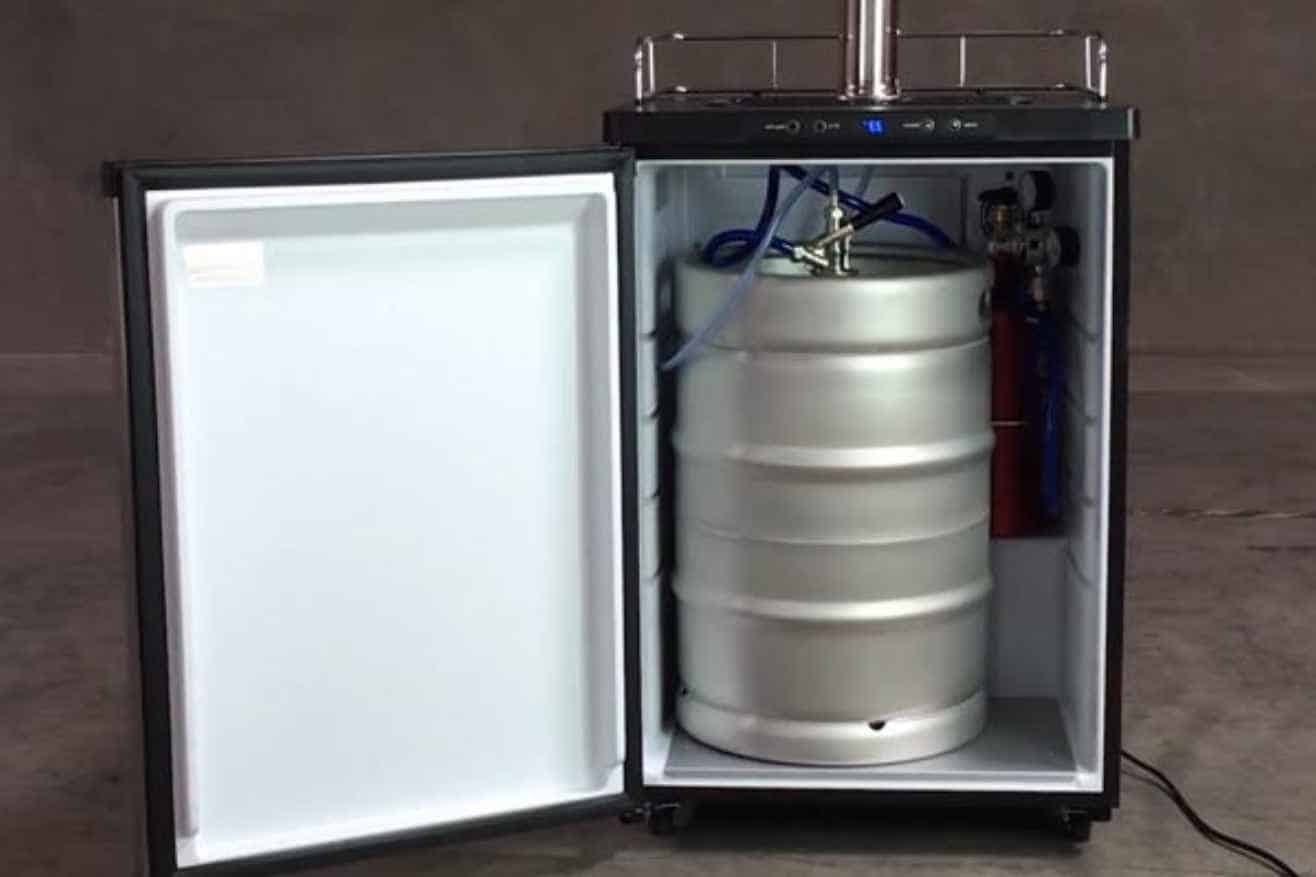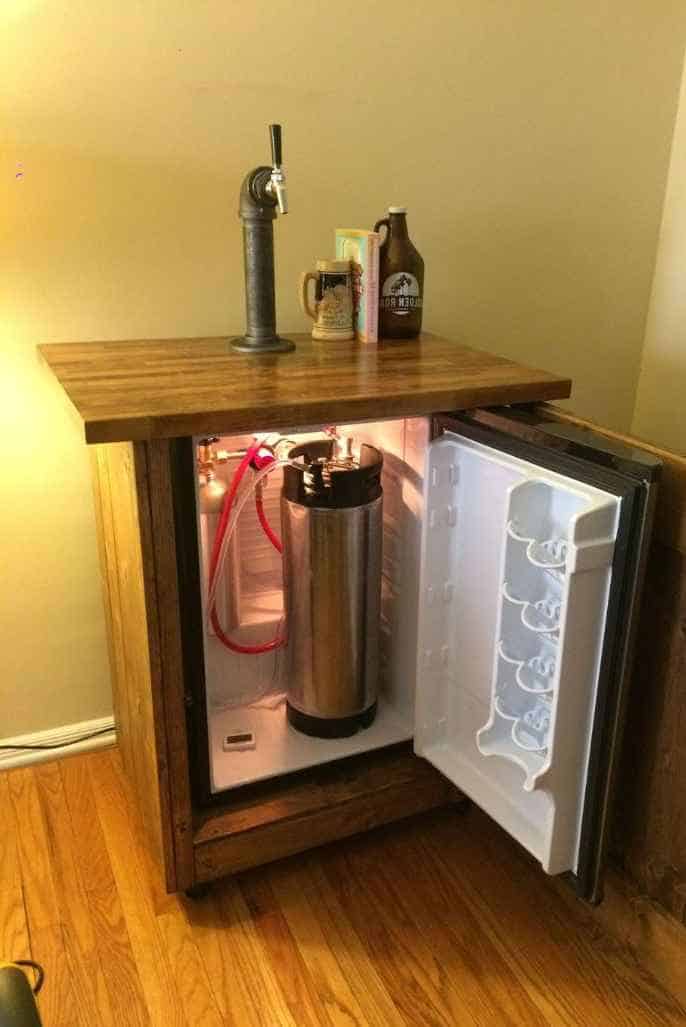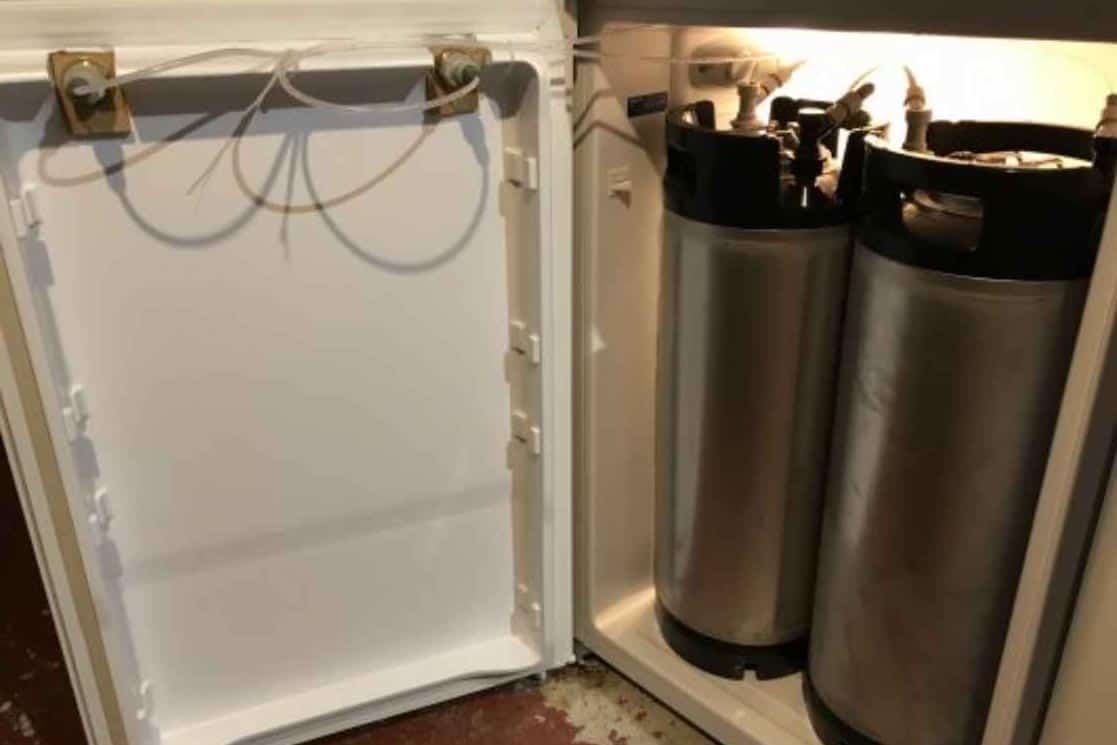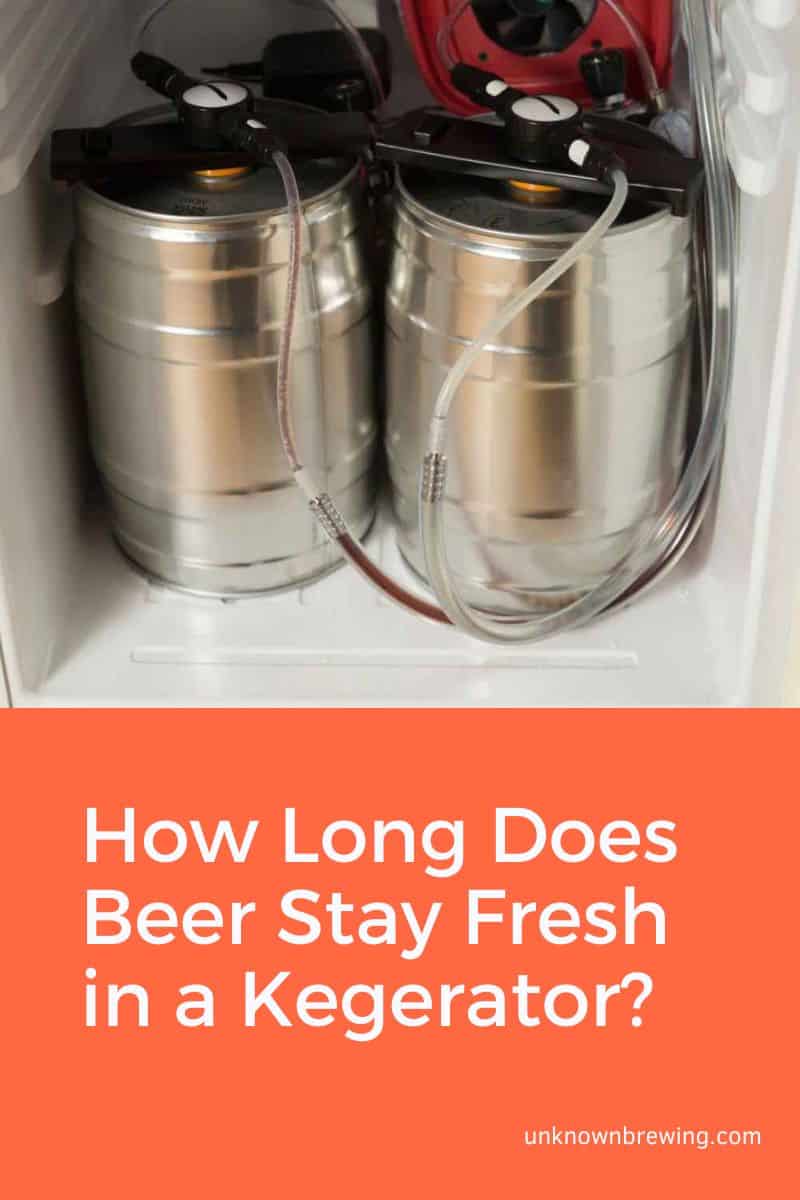A kegerator is an appliance designed to cool and dispense beer. A kegerator has three main components:
- The refrigeration component
- The carbon dioxide component
- The keg component
All these components collaborate to preserve beer freshness. But how long does beer stay fresh in a kegerator?
Depending on the beer style and alcohol content, beer can stay fresh in a kegerator for up to six months. Low-alcohol beers like light lagers have the shortest shelf lives, between two to three months. High-alcohol beers, like porters and stouts, have the longest shelf lives, up to six months.
In this article, we will discuss beer shelf life and the role of the kegerator. We will also gift you handy tips to help you optimize beer freshness. But before diving in, you must understand the variables influencing beer freshness.
Factors that Affect the Freshness of Beer
Beer freshness is affected by many different factors. Of those variables, these are the most important:
Temperature
Temperature is a critical factor in beer freshness. Store beer under the appropriate temperatures, and it will stay fresher for longer. As a rule of thumb, we recommend that beer be stored chilled, between 34-48°F. Not ice-cold, not warm, but chilled.
Chilling beer suppresses the growth and development of mold. These fungi thrive in warm temperatures. Mold can ruin beer flavor and aroma. Mold also contains mycotoxins that are harmful to humans. Cool temperatures reduce the risk of spoilage. Check out this article to learn the effect of mold on beer.
Carbon Dioxide Levels
Carbon dioxide is an essential component of beer. It gives beer its signature fizzy character. It also helps keep beer fresh. A well-carbonated beer is crisp and refreshing.
Carbon dioxide is a natural byproduct of fermentation. Under high pressure, CO2 dissolves in beer, keeping oxygen out. Beer invaders like mold need oxygen to survive. The presence of carbon dioxide in place of oxygen suppresses mold development.
Carbon dioxide levels increase a beer’s shelf life. Below is a table comparing the carbon dioxide levels of different beer styles:
| Beer Style | Carbonation Level (CO2 Vol) | Ideal CO2 Gauge Pressure (PSI) |
| Stouts | 1.2 – 2.1 | 35 – 38 |
| Ales | 2.1 – 2.6 | 7 – 13 |
| Lagers | 2.4 – 2.6 | 10 – 14 |
| Continental and Light Pilsners | 2.5 – 2.8 | 11 – 16 |
| Wheat Beers, American Sours, and Belgian Ales | +2.8 | 15 – 20 |
Beer Age
The stability and quality of a beer’s ingredients determine its freshness. Over time, beer ingredients degrade, leading to off flavors and funny smells. For example, carbonation loss may cause flatness in beer. Mold attacks turn a beer’s natural taste into a sour, vinegar-like flavor.
Therefore, consuming your keg within the recommended best-before dates is essential. While typical beer shelf lives run between three to six months, the duration depends on the beer style. For example, high-gravity beers like imperial stouts and barley wines can be aged for several years.
How Long Does Beer Stay Fresh in a Kegerator?
A functional kegerator comprises three components; a refrigeration unit, a carbon dioxide tank, and a keg. All these components work together to keep the beer fresh.
The refrigeration unit keeps temperatures low. And as you know, low temperatures suppress the growth and development of harmful bacteria and pathogens. The carbon dioxide tank pumps out the beer from the keg. It also retains the beverage’s carbonation levels.
While carbon dioxide and low temperatures help maintain freshness, a beer’s shelf life depends on the nature of the keg’s contents. Beers are made in different styles. Each beer style has its unique properties and characteristics. Instead of generalizing beer shelf life, let’s look at it from the perspective of beer style.
- Light Lagers and Pilsners: Pilsners and lagers are light beers known for their crisp and refreshing taste. After tapping, light lagers and pilsners are good for two to three months. Pilsners and light lagers have the shortest shelf lives. An explanation for this phenomenon lies in the beer’s alcohol content. Alcohol is a preserving agent, and light lagers contain the least amount (typically under 5% ABV).
- Wheat Beers: Wheat beers use a large portion of wheat in the brewing process. Wheat beers are cloudy and heavily hopped. Wheat beers have a similar alcohol content range as light lagers and pilsners (typically below 5% ABV). And like light lagers and pilsners, wheat beers can stay fresh in a kegerator for up to three months.
- Amber Ales: Amber ale is a class of ruby-brown colored pale ales. These beers have sweet, caramel flavors with medium bodies. From 4.5 to 6.2% ABV, amber ales contain more alcohol than pilsners, light lagers, and wheat beers. Amber ales can retain freshness in a kegerator for three to four months.
- IPAs: IPA is an acronym for India Pale Ale. IPAs come in various colors, ranging from 6 to 14 on the SRM scale. These beers also vary in their alcohol levels. IPAs can contain as low as 4.5% alcohol by volume and as high as 20% ABV. In a kegerator, IPAs stay fresh for two to three months.
- Stouts and Porters: Stout and porter beer styles are known for their dark colors and full bodies. They also contain high alcohol levels, typically above 6% ABV. The high alcohol content in these beer styles prolongs their shelf lives. Porters and stouts can retain their freshness in a kegerator for up to six months.
Note: The time frames mentioned above are only guidelines that give perspective. The shelf life timeframes above are not guaranteed. Depending on how well you manage your kegerator, a beer’s shelf life can drastically reduce. So how do you get the most from your kegerator?
Optimizing Beer Freshness in a Kegerator
Proper kegerator management helps you retain beer freshness for longer. Below are useful kegerator tips that will help you optimize beer freshness:
Set the Right Temperature
To preserve the integrity of your beer’s ingredients, you must store your keg under the right temperatures. Keeping a keg under warm conditions creates a conducive environment for pathogens to thrive.
And while storing a keg under cold conditions can help preserve its freshness, extremely low temperatures cause under carbonation. While nobody wants to suffer from brain freeze, no one enjoys a flat beer. So what is the appropriate temperature for beer? We recommend setting your kegerator temperature between 34-48°F.
Clean Your Kegerator Before Installing a New Keg
Beer is susceptible to pathogen attacks, mold especially. Mold spores are dispersed by wind, and they can find their way to the inner surfaces of your kegerator. If you plug a contaminated coupler, you risk infecting the beer with mold.
By cleaning your kegerator and beer lines, you’re minimizing the risk of microbial contamination. Besides the off flavors and musty smell, ingesting molded beer harms human health.
Maintain Consistent Carbon Dioxide Pressure
Carbon dioxide increases the perceived bitterness of beer, thus improving its taste. Carbon dioxide gives beer its head; without it, the beverage would taste flat. We use pressurized carbon dioxide gas in the draught system to pump beer out of its keg.
While the gas does a great job of extracting the liquor, it also maintains the carbonation levels. To avoid overshooting or undershooting carbon levels, maintain consistent pressure.
Consume Your Beer Within the Recommended Timeframes
Once you tap a keg, the clock starts running, and the beer begins losing its freshness. A beer’s shelf life is influenced by its style and alcohol content. Light lagers have the shortest shelf life at two to three months, and stouts have the longest (up to six months). Any time you install a keg, please check the manufacturer’s recommendations.
Troubleshooting Tips for a Stale Beer in a Kegerator
What should you do if you find stale beer in your lines? The problem could lie in your kegerator. You can tell a beer is stale when it turns sour (vinegar-like taste) and develops a musty smell.
Below are some effective troubleshooting tips to help you identify the problem:
Check the Power Supply
Stale beer can be an indication of warm temperatures. But a kegerator cannot cool beer if it isn’t turned on. Check the kegerator’s power supply and confirm whether the appliance is turned on. If it isn’t, turn it on. If the kegerator is turned on, proceed to the next step.
Check the Temperature Settings
Beer should be stored at low temperatures, between 34-48°F. Temperatures above this level could lead to spoilage. Check your temperature settings and adjust them appropriately.
Check Carbon Dioxide Pressure
We often mistake beer flatness for staleness or spoilage. While beer flatness can be caused by spoilage, it can also be caused by reduced carbonation. Check the manufacturer’s recommended pressure levels and adjust them accordingly.
If the pressure settings are at the appropriate levels, check for carbon dioxide leakage. Check the coupler fittings and gas lines for any leakages.
Replace the Stale Beer
If all your kegerator settings are okay and staleness persists, the beer has gone bad. Unplug the old beer, and sterilize your beer lines, kegerator, and couplers before installing your new keg.
Final Thoughts
Consuming stale beer is harmful to you and your customers. A kegerator helps retain your beer freshness for longer. With the appropriate settings, your kegerator can preserve your beer for months. But to enjoy this privilege, ensure that:
- The kegerator stays on
- You maintain consistent carbon dioxide pressure
- You keep temperatures between 34°F and 48°F
- You consume your beer within the recommended timeframes

As a homebrewer, Michael would get frustrated about the lack of brewing information on the internet. After hundreds of gallons of spoilt batches, Micheal had enough. And he founded Unknown Brewing as a resource for homebrewers.
